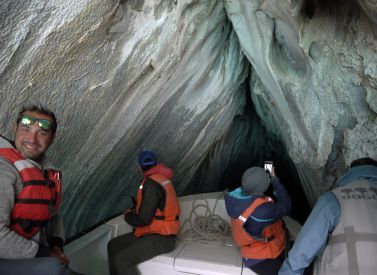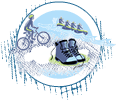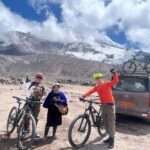Patagonia Park
 by Kathy Jarvis on 15th November, 2019
by Kathy Jarvis on 15th November, 2019

The Patagonia National Park in the Chilean region of Aysen was formed in 2018 and is the combination of the Lago Jeinimeni National Reserve, Lago Cochrane/Tamango Reserve and the Parque Patagonia also known as Patagonia Park in the Chacabuco Valley. The latter was created by Conservacion Patagonica, a nonprofit incorporated in California whose mission was to protect Patagonia’s wildlands and ecosystems. The National Park covers an area of over 300,000 hectares.

Map of Patagonia National Park
Doug and Kris Tompkins
Conservationists Douglas Tompkins, the founder of The North Face and Esprit, and Kristine Tompkins first visited the Chacabuco Valley in 1995 and were captivated by a valley which they saw could become the heart of a world-class, wildlife focused. This would be the start of an epic mission for both of them.

Patagonia Park
Conservacion Patagonica
Conservacion Patagonica was founded in 2000 by Kris Tompkins and since then has focused on building new national parks in Chile and Argentina’s southernmost region, Patagonia.
In 2004 they purchased the 70,000 hectare Estancia Valle Chacabuco and set about improving the odds for wildlife. They sold off livestock, took down fences, restored grasslands and forests, and developed species-specific restoration programs. This was the creation of Patagonia Park, which with the purchase of further land covers and area of around 81,000 hectares.

In the park
Parque Patagonia
As of April 2019, the administration of Patagonia Park has been taken over by CONAF, the Chilean National Forest Corporation as it is now part of the Patagonia National Park.
The Chacabuco Valley is located where southern beech forests meet the Patagonian steppe ecosystem . The re-wilding of the landscape, helping to restore ecological integrity and promoting wildlife recovery has to date had encouraging results.

Guanacos
One of the success stories is the Huemul recovery programme. The Huemul or Andean Deer is critically endangered with fewer than 2,000 individuals remaining in scattered populations. Recovering the population of the huemul deer represents a top priority for the wildlife program and requires intensive study and protection to prevent extinction. The current population in the National Park is of around 140 and by removing livestock, reviving ecosystems, and opening up habitat, the Patagonia Park project grants huemul deer the high-quality habitat they need to recover.

Huemul information in the museum
Other wildlife to be found in the park include guanacos, foxes, armadillos, vizcachas, pampa’s cats, pumas, black necked swans, condors, Chilean flamingos, austral parakeets and pygmy owls.
Location and facilities
The park is a six to eight hour drive south from Balmaceda airport and a much shorter drive of under two hours from the towns of Puerto Guadal on Lake General Carrera and Puerto Bertrand on the Cochrane River. There are numerous accommodation options in the area.

The Lodge, Patagonia Park
Near to the entrance of the park is a popular natural attraction “Confluencia” where the Rivers Neff and Baker merge in a colourful mixing of waters. This site of great natural beauty had been under threat of extinction by the project to create a dam.

Confluencia
In the park itself you will find the Lodge at Valle Chacabuco offering top end accommodation. Other facilities to be found are a restaurant, campsites and a very impressive museum.

Inside the muesum
The park also offers opportunities for scenic drives and hiking with several trails ranging from 3 Km to 23 Km.

Campsite
In memoriam
Douglas Tompkins, aged 72, died in a kayaking accident on Lake General Carrera in 2015. He is buried in the graveyard in the administration area of Patagonia Park.

The cemetery


 a Group Tour
a Group Tour  a Tailor Made Tour
a Tailor Made Tour 








